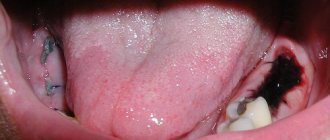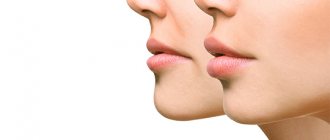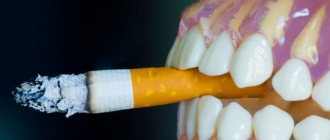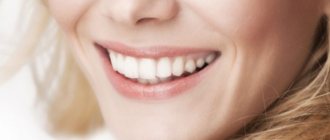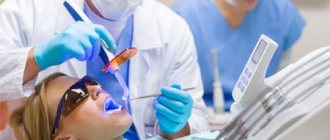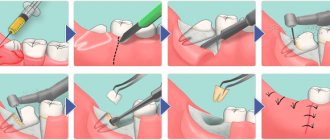Every person involved in sports carefully monitors their diet. Not only how many calories will be burned, but also what muscles will be built, what kind of relief will be obtained and how the athlete will feel depends on sports activities and exercises. A dietary or high-calorie menu meets the same goals. For professionals, each meal is determined not by taste, but by the combination of fats, proteins and carbohydrates. In this article we will find out how many hours later and what you can eat after training, and whether this will harm the result.
Food before workout
Often people deliberately do not eat not only after training, but also before, so as not to interfere with fat oxidation. These fears are not justified.
Research shows that carbohydrates during intense cardio (interval training, HIIT, etc.) have no effect on fat oxidation. Of course, low-intensity workouts (light jogging, brisk walking, cycling or stationary cycling) will be affected, but such workouts usually do not require additional energy, are low-energy in themselves, and can even be done on an empty stomach.
Moreover, carbs before an intense workout can indirectly help with fat loss - simply by allowing you to work harder, longer, and harder. As a result, you burn more calories per workout than if you could barely move from weakness and hunger.
From a weight loss point of view, the ability to train at full strength is much more important than the additional calorie expenditure due to skipping meals, especially since it is very small.
The same applies to strength training while losing weight. The ability to train hard, intensely always takes precedence over the ability to burn a few extra calories. Moreover, strength training does not consume many calories - during the workout, a person rests in total more than he trains.
The goal of strength training during weight loss is not so much to burn calories as to protect your muscles while on a diet. Spending calories is just a bonus, not a goal.
Don't exercise on an empty stomach
First, let's figure out what and when to eat before training. We dismiss exercises on an empty stomach right away: we don’t have enough strength to finish exercising to the end. Hunger disrupts coordination of movements, breathing rhythm and exercise technique (hello, injuries!), Hungry fainting may even occur.
At the same time, if you are overweight, your task during fitness is to start the process of destroying the reserves of subcutaneous and internal fat. Once it gets from the depot into the blood, in any case, after 5-7 minutes of movement, it will begin to be utilized by the working muscles and heart. After 20 minutes of continuous movement, the body will already work mainly on fat. But how to force this stubborn substance to leave its homes?
Fat reserves are broken down as a result of a complex biochemical chain that involves hormones, neurotransmitters, etc. The trigger is physical exercise for at least 20 minutes straight. Accordingly, food before training should provide energy for these 20 minutes and for the production of neurotransmitters. At the same time, food should not interfere with exercise and, most importantly, not replenish the blood with fats! Otherwise, why would they leave the depot?
Based on this, simple rules for pre-workout nutrition have been formulated.
- Eat about 1.5-2 hours before fitness.
- Choose complex carbohydrates and some protein (proteins): buckwheat + meat, rice + chicken, low-fat cottage cheese. The portion should be small so as not to overfill the stomach.
- You can supplement it with vegetables, especially watery ones like cucumbers and tomatoes, but not too much. Otherwise, you will come to class and endlessly run to the toilet - an excess of vegetables can cause such provocations during fitness.
- You can eat fruits and berries , but only a little - too many fast carbohydrates from them will make the release of fat from the depot completely unnecessary, because the muscles will already have something to eat.
- No fats - they are especially common in mayonnaise-based (white) sauces. It’s better to make a sauce from vegetables and minced meat (Bolognese type); it can also be used as a protein component of a meal.
- The calorie content of a meal is 200−500 kcal (the longer and more intense the workout, the more).
Eating after an intense workout
After a high-intensity workout, the body continues to use fat for fuel, even when you eat carbohydrates immediately after (as long as you maintain a calorie deficit for the day). Carbohydrates are used for recovery, and the body continues to use fat for energy.
Post-workout nutrition has a huge impact on the body's recovery. On a diet, recovery is worse, and if a person does not eat two hours before training, an hour during training and two hours after, stress becomes greater.
Therefore, the benefits of eating post-workout outweigh any benefits from the additional (and very modest) calorie expenditure.
Sample menu after surgery for a week
| Eating | 1 breakfast | 2 breakfast | Dinner | Afternoon snack | Dinner |
| Monday | Rice porridge, steamed soft-boiled eggs, tea | A glass of milk or low-fat kefir | Vegetarian soup, steamed zrazy, compote | Rose hip decoction, unsweetened cookies | Boiled potatoes, boiled fish, tea with milk |
| Tuesday | Tender cottage cheese with yogurt or sour cream, steam omelette, tea | Pumpkin pudding | Oatmeal soup, boiled chicken or rabbit with vegetable puree, fruit drink | Banana-apple mousse | Steam cutlet with buckwheat porridge, glass of low fat milk |
| Wednesday | Semolina porridge on skim milk, herbal decoction | Sweet apple | Milk noodle soup, vegetable stew with baked fish, berry juice | Fruity or berry jelly | Stewed rabbit with pasta, a glass of milk |
| Thursday | Oatmeal, toast, 2 soft-boiled eggs | Fruit puree | Rice soup with chicken broth, baked vegetables with boiled fish, compote | Natural yogurt, banana | Boiled beef with mashed potatoes, tea |
| Friday | Cottage cheese and buckwheat porridge, tea | Berry or fruit soufflé | Noodle soup, casserole from lean meat and vegetables, fruit juice | Toasts, cottage cheese casserole | Steamed fish meatballs with boiled rice, a glass of milk |
| Saturday | Vegetable puree, steam omelette, milk | Fruit jelly | Oatmeal soup, pumpkin or zucchini puree with boiled chicken, berry drink | Natural yogurt, cottage cheese | Meat soufflé with buckwheat, green tea |
| Sunday | Milk rice soup, tea | Banana, pear | Vegetable vegetarian soup, steamed cutlets dietary meat with potatoes puree, jelly | Fruit mousse or soufflé | Boiled rice with fish, milk |
Eating after regular cardio
Many people forget that weight loss occurs not only during training, but in the remaining 23 hours when a person is not exercising. Therefore, the basis of any weight loss is, first of all, diet.
If you maintain a calorie deficit throughout the day, you will lose weight even if you eat right after cardio.
Regular cardio, due to its low power, does not require a large amount of energy before, during and after exercise. Therefore, here you can rely on the feeling of hunger. If you want, eat, if you want, don’t.
What is allowed
The patient is allowed:
- porridge;
- eggs in the form of an omelet or boiled soft-boiled;
- low-fat cottage cheese, kefir, sour cream;
- zucchini, pumpkin puree with the addition of potatoes, carrots;
- chicken, lean beef, rabbit, turkey;
- broths, soups;
- steam cutlets or zrazy from dietary meat;
- biscuits, white bread crackers;
- lean fish;
- cheese;
- fruit soufflés, jelly-like desserts;
- bananas, sweet apples, pears, melons.
For drinks, it is recommended to consume herbal green teas, compotes, jelly, berry fruit drinks, milk and weak black tea with milk. Soups are prepared with vegetable broth or milk, less often with meat broth. Mucus soups with the addition of oatmeal are good for the stomach. Cream soups are also welcome in the patient’s diet.
Recommended video:
How to organize meals?
Instead of cutting out carbs before and after strength training to burn more calories, do the opposite. Eat basic carbohydrates before and after training, reducing their amount at other meals.
If you're training in the evening, it doesn't make sense to eat most of your carbs for breakfast. Moving your carbs to the evening can preserve some of the benefits of a low-carb diet during the day (due to low insulin levels), while still allowing you to exercise intensely and allow your body to recover afterwards.
What is prohibited
The patient is prohibited from:
- alcohol;
- pearl barley and millet;
- fatty foods, including fatty broths;
- eggs fried in butter;
- sausages and cheeses with high fat content;
- canned food;
- kvass and carbonated drinks;
- food with a pronounced taste - bitter, sweet, sour foods and dishes with seasonings;
- citrus;
- tomatoes, cabbage, cucumbers, sorrel;
- peas, beans, beans;
- mushroom dishes;
- garlic, onions, a large amount of herbs;
- seeds, nuts;
- fast food, chips.
You should not eat freshly baked pastries and bread after gastric ulcer surgery. Cocoa, coffee and strong tea are excluded from drinks. Foods that are difficult for the stomach cause aggressive secretion of juice, which has an irritating effect on the mucous membrane of the diseased organ.
All store-bought products that contain a lot of salt, sugar and chemical compounds are prohibited. Serious complications after gastric ulcer surgery can be caused by smoking. Tobacco smoke, and with it harmful substances, enter the walls of the gastric mucosa, irritating it and preventing healing.
After what time does an employee have the right to leave on a preferential basis?
Part 3 art. 122 of the Labor Code of the Russian Federation determines the list of employees who should be granted their first full leave based on their application before they have worked for 6 months.
It's about:
- about citizens who have adopted one or more children whose age is less than 3 months;
- workers under 18 years of age;
- women before or immediately after maternity leave.
In addition, a number of employees, due to their family status, must be granted leave at a time convenient for them, and therefore the rule on compulsory 6-month work will also not apply to them. These employees include:
- a parent (other legal representative) who is raising a disabled child (Article 262.1 of the Labor Code of the Russian Federation);
- parents who are raising three or more children under the age of 18. They have the right to leave at a convenient time until the youngest child reaches the age of 14 (Article 262.2 of the Labor Code of the Russian Federation).
The answer to the question about the need to provide leave to a father with many children 2 months after employment is in the ConsultantPlus system. Get trial access to the K+ system and study expert opinion for free.
Speaking about how long the listed categories of employees are entitled to leave, it should be understood that the norms of the Labor Code of the Russian Federation do not establish any minimum restrictions. In practice, this means that an employee with such a benefit can apply to the employer’s management and take out his first vacation almost immediately after employment.
What lifestyle should you lead after getting implants?
The period of implant healing is called osseointegration. For it to be successful, you need to lead a correct lifestyle throughout the entire period:
- It is necessary to give up physical activity, sports, and avoid lifting heavy objects.
- Drinking alcohol and smoking will prevent the implant from taking root. Alcohol raises blood pressure, nicotine impairs the nutrition of cells in mucous tissues. Bad habits can lead to the penetration of bacteria and gum inflammation.
- Hygiene must be of high quality. You should brush your teeth twice a day using a soft brush and toothpaste. You should rinse your mouth every time after eating. Mouth baths with antiseptic liquids are useful.
- During the period of osseointegration, air travel should be avoided. Visiting saunas, baths, and swimming pools is also prohibited. Any changes in pressure or temperature are dangerous for the body.
- You can sleep on your healthy side.
- Warming compresses are not allowed.
- Coughing, sneezing, and blowing your nose should be done with extreme caution.
If, in addition to implantation, a sinus lift was performed, then the patient must stop drinking drinks through a straw.
Top 5 Pre-Workout Products
Oatmeal
A good source of energy that is quickly absorbed by the body.
Brown rice and chicken breast
Brown rice is one of the best sources of slow-release carbohydrates, and chicken is an ideal form of lean protein.
Protein shake
A protein shake can be a good option for those who don't get enough protein from food or don't have the opportunity to eat a normal meal before a workout.
Peanut butter sandwich
Whole grain bread is an excellent source of complex carbohydrates, and peanut butter is high in protein, vitamin E and magnesium.
Energy bar with granola
An energy bar contains carbohydrates with different glycemic indices, which will be gradually absorbed by the body and provide you with energy in portions.
More about training, nutrition, sports medicine and sports as an activity - in the “Health” section
Subscribe to the Sports.ru telegram channel about health
Photo: pexels.com/Trang Doan, Foodie Factor, Li Sun, Ella Olsson, Maor Attias, Burst, Robin Stickel, alleksana, Trista Chen, Suzy Hazelwood
We remind you that we have a discount section where you can find Grow Food promo codes.



